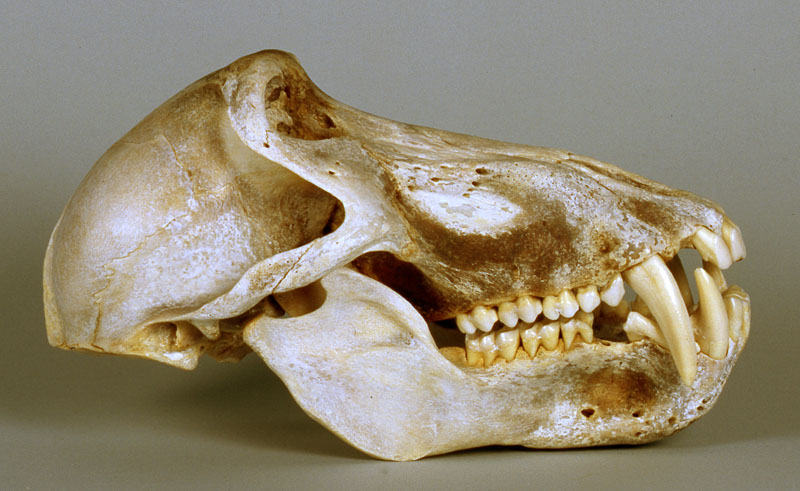Arguably the most famous fossil discovery in paleoanthropology is that of 'Lucy', a remarkably complete example of Australopithecus afarensis. Lucy is not the only specimen of Australopithecus afarensis that we have, but given its state of preservation, it position in paleoanthropology is eminently justified.
Its capacity to surprise however has not diminished over the 40 years since its discovery. Colin Barras, writing in the popular science magazine New Scientist reports on an intriguing discovery that one of the vertebral bones may indeed be that of a gelada, a close relative of the baboon. If confirmed, this shows that unlike special creationism, which never admits its mistakes, science is inherently self-correcting.
Barras writes:
But when Gary Sawyer and Mike Smith at the American Museum of Natural History in New York recently began work on a new reconstruction of Lucy's skeleton, with help from Scott Williams at New York University, they noticed something odd.
"Mike pointed out that one of the [vertebra] fragments, which no one, including me, had really paid close attention to, looked fairly small to fit with the rest of Lucy's vertebral column," says Williams.
Williams had been working with Marc Meyer at Chaffey College in Rancho Cucamonga, California, on the spinal column of another early hominin, Australopithecus sediba, and so the two researchers decided to study the fragment.
They soon concluded that it didn't belong to Lucy. "It was just too small," says Williams.
One possible explanation was that the vertebra fragment came from a second, juvenile member of Lucy's species. So Williams and Meyer did a comparative study that included vertebrae from other Australopithecus fossils. To satisfy a personal hunch, Williams also added vertebrae from other animals known to have lived in the Hadar region 3.2 million years ago, such as porcupines and pigs. The results showed, surprisingly, that the fragment may not have belonged to Australopithecus at all.
"Baboons were a close match, both in shape and size," says Williams. "So we think we've solved this mystery. It seems that a fossil gelada baboon thoracic vertebra washed or was otherwise transported in the mix of Lucy's remains." (Emphasis mine)
This is not an uncommon phenomenon as palaeoanthropologist John Hawks notes in his commentary on this story:
Mistakes in field identification of fossil remains are inevitable. It is rare for such misidentifications to persist for long under laboratory analysis, although it has happened with fossil hominins before. Most notably, the initial publications of the OH 7 type specimen of Homo habilis included a few bones amid the hominin hand remains, which were later identified as belonging to a large fossil monkey. Subtle anatomical mismatches, like a vertebra that is slightly wrong, require some detailed analysis to discover. (Emphasis mine)
In order to be able to detect those 'subtle anatomical mismatches' you need genuine expertise and competence which can only come from formal education in comparative anatomy at the tertiary level, and hundreds of hours spent poring over bones to get a feel for the range of anatomical variation within species, and between species. The creationist layperson who thinks that this is somehow a body blow for evolution is simply demonstrating both their bias, and their failure to appreciate the difficulty of differentiating between similar bones.
The following example, in which vertebral bodies from human, ape, and extinct hominin are presented without identification should make the point that differentiating between cervical, thoracic, and lumbar vertebral bodies of differing species when the bones are in varying stages of preservation is hardly trivial. Some humility would definitely not go astray, particularly given the hopeless special creationist record on differentiating between hominin skulls.

 |
I have deliberately not given any captions to point out that if you cannot tell which are ape and which are human, which are extinct and which are extant, and whether they are cervical, thoracic, or lumbar vertebrae, you simply don't know enough to have an opinion worth listening to on the subject, and your only response is to (1) honestly accept your ignorance on the subject and (2) listen to the experts on the subject for an informed, reliable opinion.
The special creationist who did that would quickly realise, just from the New Scientist article that:
the analysis, which he will present at a meeting of the Paleoanthropology Society in San Francisco next week, also confirms that the other 88 fossil fragments belonging to Lucy's skeleton are correctly identified. And the mislabelled baboon bone fragment doesn't undermine Lucy's important position in the evolution of our lineage. (Emphasis mine)
Likewise, they would realise that hopelessly uninformed comments such as "The whole thing is probably a mix of ape bones" positively shouts their complete ignorance of human anatomy and paleoanthropology. One would like to think that even special creationists could tell the difference between human skulls
australopithecine skulls
and baboon skulls:
and consider that when dealing with a subject well outside their area of competence, a respectful silence and a willingness to consult expert opinion to fill the huge holes in their understanding of the subject would be the prudent thing to do, if only to further avoid bringing our community into disrepute.





